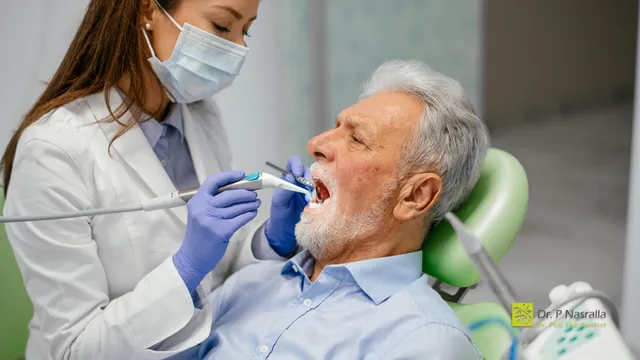Effective Strategies for Alleviating Tooth Pain Before Visiting a Dentist

Encountering tooth pain can be unexpectedly debilitating. Left untreated, it can disrupt even the simplest factors of daily life, from eating to speaking. Often, the real challenge is finding temporary relief until you can see a dentist. It’s important to have a few home remedies up your sleeve to manage discomfort and minimize disruptions. You can learn more about dental care options and emergency services by visiting an online resource. Tooth pain can originate from a variety of causes, making it essential to understand what might be the root cause of your discomfort to effectively manage it until professional care is available.
The causes of tooth pain are numerous, ranging from cavities and gum disease to more specific issues like tooth sensitivity. Understanding these causes is fundamental in addressing the pain correctly. For example, a cavity may require different mitigation than gum disease, and the correct approach can not only relieve pain but also prevent further complications. Such insights are valuable, ensuring that the methods you choose momentarily ease your pain without causing additional harm.
Understanding Common Causes of Tooth Pain
When deciphering the possible sources of your dental pain, it is important to consider common culprits. Cavities, often resulting from prolonged exposure to sugary foods leading to tooth decay, can cause sharp pain, especially when eating or drinking. Gum disease, which includes gingivitis and periodontitis, frequently causes toothache as well as swollen or bleeding gums. Another common issue is tooth sensitivity. This kind of sensitivity usually happens when the gums recede or the enamel wears down, revealing the underlying layer that reacts severely to cool or hot stimuli. Recognizing these causes directs you toward suitable strategies and helps you anticipate dental treatment options your dentist might propose.
See also: Always Green Landscaping: Myrtle Beach’s Premier Lawn Care & Landscape Design Experts
Immediate Actions for Tooth Pain Relief
In the face of sudden and intense tooth pain, quick responses can be crucial in preventing further distress. Gargling warm salt water is frequently recommended. The saline solution serves as a mild antiseptic, helping to remove debris and reduce inflammation. This simple remedy can create an environment less conducive to bacteria and help alleviate discomfort.
Alongside rinsing, applying a cold compress outside on your cheek can offer relief. The cold acts as a numbing agent, restricting blood flow to the area, which minimizes swelling and offers significant pain reduction. Over-the-counter medications, including ibuprofen or acetaminophen, can also offer more consistent relief, although it is critical to adhere to safe dosages and guidelines for their use.
Natural Remedies for Tooth Pain Relief
Alternatively, natural remedies can also provide effective toothache relief. Clove oil, in particular, has been celebrated for its analgesic and antibacterial properties, thanks to the presence of eugenol, a natural anesthetic. Placing a small amount of clove oil to a cotton ball and placing it against the affected area can help mitigate the pain while offering antibacterial actions to support healing. However, care must be taken as clove oil can be potent and is better suited for short-term applications.
When to Seek Emergency Dental Care
While home solutions can offer temporary relief, they are not substitutes for professional evaluation, especially in more severe cases. Vigilance is required because symptoms like intense, unrelenting pain, significant swelling, or high fever may indicate more serious underlying issues. Likewise, visible signs of infection, such as an abscess, or experiences of trauma like broken or completely dislodged teeth necessitate prompt dental intervention. Such situations are categorized as dental emergencies, and timely assistance is key to preventing further complications that might threaten your oral health and overall well-being.
How Diet and Lifestyle Affect Tooth Pain
A sometimes overlooked aspect of dental health is the impact that daily dietary and lifestyle decisions have. A high intake of sugars is notorious for fueling the bacteria that lead to cavities. Acidic foods and beverages pose another threat by eroding enamel, ultimately making teeth more susceptible to decay and sensitivity. Furthermore, habits like smoking tobacco and consuming alcohol can exacerbate existing dental issues or create new ones by weakening the structures within the mouth. Awareness and moderation in these areas can be powerful in safeguarding against tooth pain.
Preventing Tooth Pain with Regular Dental Care
At the core of effective dental pain prevention is routine dental care. Regular dental visits are not only about cleaning but are also a vital means of early diagnosis for many dental conditions. Dentists can spot early indicators of issues like cavities and gum disease before they manifest as pain. Professional cleanings are just as vital, as they remove calculus deposits and plaque that harbor bacteria, thereby reducing the risk of decay and inflammation that might otherwise go unnoticed without expert intervention.
Best Practices for Home Oral Hygiene
Exemplary home oral care practices act as your first line of defense against tooth pain. Brushing twice daily with fluoride toothpaste can significantly reduce plaque while flossing aids in removing food particles and debris from between teeth that might otherwise lead to decay. An effective oral hygiene routine often includes mouthwash, which can reach areas that brushing and flossing might miss, thus contributing to fresher breath and decreased oral bacteria. By maintaining these habits diligently, you substantially reduce your risk of common issues that could lead to tooth pain.
Emerging Trends in Dental Pain Management
Continuous advancements in dental science promise exciting potential for managing dental pain more effectively. Innovations in pain management technologies are actively pursued by researchers, offering hope for less invasive and more effective treatments. These advancements are not limited only to mechanical solutions but also biochemical approaches that could redefine pain management. For a more detailed insight into these advancements, see this recent study that discusses new research directions.
Conclusion: Preparing for Your Next Dental Visit
Your next dental visit offers an opportunity to address current issues and prevent future ones. Arriving prepared with a thorough understanding of your symptoms and the remedies you’ve tried allows for a more productive consultation. Discuss pain management, potential treatment plans, and proactive strategies to maintain oral health. By adopting a proactive stance on dental health today, you reinforce the protections surrounding your health for tomorrow.
For further reading on managing symptoms and ensuring optimal oral health, consult comprehensive resources like this guide on Healthline. These sources offer detailed advice and cover a broader scope of dental health topics that can be instrumental in fostering long-term wellness.



